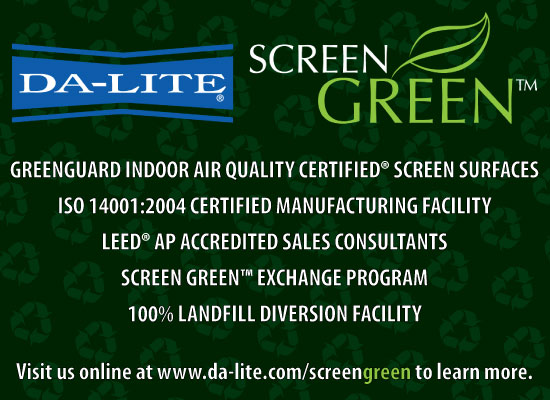
 If there is one thing that has always plagued me about our business, it’s the consumption of batteries. Whether we are on the integrated/installed side of the business or the wild west of live events, there is one little nuisance we all share… and that is the vexing hassle of battery consumption. In a world where wireless has become ubiquitous, there are few users out there who will settle for the idea of being tethered while presenting or lecturing from a stage. But along with this liberation comes its own weight for us to bear… what to do about the rapid consumption of batteries in our jobs, from power tools to microphones to other electronics used in the course of our work?
You might be wondering whether batteries are truly such a big deal that we can spend an entire column on the topic – and that’s understandable! But the troublesome fact is that household dry cell batteries (A, AA, AAA, C, D, 9V, etc.) contribute about 88 percent of the total mercury and 50 percent of the cadmium in the municipal solid waste stream. In the past, batteries accounted for nearly half of the mercury used in the United States and over half of the mercury and cadmium in the municipal solid waste stream, per the U.S. Environmental Protection Agency. And I know from personal experience that if there is one practice that is ingrained in every event technician, it’s that microphone batteries are changed DAILY, if not between sessions (when your client is paying $200K for a keynote speaker, you better believe the tech lives in fear that a dead battery will kill the show).
So what do you think about rechargeable batteries? For the longest time, I operated under the assumption there was no way it could work, there are just too many variables with these tricky little suckers.
Here are a few of the issues: If there is one thing that has always plagued me about our business, it’s the consumption of batteries. Whether we are on the integrated/installed side of the business or the wild west of live events, there is one little nuisance we all share… and that is the vexing hassle of battery consumption. In a world where wireless has become ubiquitous, there are few users out there who will settle for the idea of being tethered while presenting or lecturing from a stage. But along with this liberation comes its own weight for us to bear… what to do about the rapid consumption of batteries in our jobs, from power tools to microphones to other electronics used in the course of our work?
You might be wondering whether batteries are truly such a big deal that we can spend an entire column on the topic – and that’s understandable! But the troublesome fact is that household dry cell batteries (A, AA, AAA, C, D, 9V, etc.) contribute about 88 percent of the total mercury and 50 percent of the cadmium in the municipal solid waste stream. In the past, batteries accounted for nearly half of the mercury used in the United States and over half of the mercury and cadmium in the municipal solid waste stream, per the U.S. Environmental Protection Agency. And I know from personal experience that if there is one practice that is ingrained in every event technician, it’s that microphone batteries are changed DAILY, if not between sessions (when your client is paying $200K for a keynote speaker, you better believe the tech lives in fear that a dead battery will kill the show).
So what do you think about rechargeable batteries? For the longest time, I operated under the assumption there was no way it could work, there are just too many variables with these tricky little suckers.
Here are a few of the issues:
 However, I guess my real conclusion would be about how we manufacture our equipment, rather than tackling the batteries we put in it. If we have been trained to replace our radios and other devices on the charger each night, is there a reason why we can’t do the same with all the mics and other battery monsters we use? I think the challenge is less about developing better removable batteries, and more about rethinking how this equipment could be recharged in a new way (built-in Lithium-ion anyone?).
Midori Connolly is the founder of AVGirl Productions in California. She wrote the first-ever set of Sustainable Staging best practices after discovering none existed. She was the co-chair of the AV committee for the ASTM Standard for Environmentally Sustainable Meetings and is a speaker, writer and consultant for green practices in live events and meeting planning. Reach her at midori@avgirlproductions.com
Leave a Comment However, I guess my real conclusion would be about how we manufacture our equipment, rather than tackling the batteries we put in it. If we have been trained to replace our radios and other devices on the charger each night, is there a reason why we can’t do the same with all the mics and other battery monsters we use? I think the challenge is less about developing better removable batteries, and more about rethinking how this equipment could be recharged in a new way (built-in Lithium-ion anyone?).
Midori Connolly is the founder of AVGirl Productions in California. She wrote the first-ever set of Sustainable Staging best practices after discovering none existed. She was the co-chair of the AV committee for the ASTM Standard for Environmentally Sustainable Meetings and is a speaker, writer and consultant for green practices in live events and meeting planning. Reach her at midori@avgirlproductions.com
Leave a Comment
|
||||||||||||
Click here for more information
![]()
 Polymer-stabilized blue-phase LCD promises to solve many of the problems that face large and small panel makers today. As Dr. Wu explained, clever mixtures of nematic host molecules, chiral dopants and stabilizing monomers can stretch the temperature range of double-twist blue phase LC operation to more than 70º C. More important, they’re fast: Switching time can be less than a microsecond! If discrete RGB (or multi-primary RGBY or even RGBW) backlights are applied, there is plenty of bandwidth for rainbow-trail-free FSC. That would eliminate need for sub-pixels. Effective aperture ratios would increase and color filter losses would be eliminated (along with their costs!). Power efficacy could increase four-fold. That would be really good news for brands planning 84-inch Quad-HD products or long-battery-life portables.
In collaboration with Dr. Wu, CMI engineers invented a way to improve the optical switching capabilities of blue phase LC by forming trapezoidal pixel electrodes. Early attempts to construct IPS-type pixels with blue phase LC faced problems because of higher voltage requirements and cell-gap sensitivities. As shown in the diagram from student Linghui Rao’s paper (doi:10.1063/1.3271771), interleaved electrodes with a trapezoidal shape (a 1 micron plateau on a 2 micron base) put the blue phase crystals in the proper shape to enable fast switching at 10 Volts. The cell gap sensitivity declines also, which is always a good thing for manufacturers. As Dr. Wu explained, such electrode structures are possible, but they may be difficult to control in mass production.
Polymer-stabilized blue-phase LCD promises to solve many of the problems that face large and small panel makers today. As Dr. Wu explained, clever mixtures of nematic host molecules, chiral dopants and stabilizing monomers can stretch the temperature range of double-twist blue phase LC operation to more than 70º C. More important, they’re fast: Switching time can be less than a microsecond! If discrete RGB (or multi-primary RGBY or even RGBW) backlights are applied, there is plenty of bandwidth for rainbow-trail-free FSC. That would eliminate need for sub-pixels. Effective aperture ratios would increase and color filter losses would be eliminated (along with their costs!). Power efficacy could increase four-fold. That would be really good news for brands planning 84-inch Quad-HD products or long-battery-life portables.
In collaboration with Dr. Wu, CMI engineers invented a way to improve the optical switching capabilities of blue phase LC by forming trapezoidal pixel electrodes. Early attempts to construct IPS-type pixels with blue phase LC faced problems because of higher voltage requirements and cell-gap sensitivities. As shown in the diagram from student Linghui Rao’s paper (doi:10.1063/1.3271771), interleaved electrodes with a trapezoidal shape (a 1 micron plateau on a 2 micron base) put the blue phase crystals in the proper shape to enable fast switching at 10 Volts. The cell gap sensitivity declines also, which is always a good thing for manufacturers. As Dr. Wu explained, such electrode structures are possible, but they may be difficult to control in mass production.
 An AUO-sponsored project took a different approach. Rather than shape the electrodes, they chose to shape the input and output angles of light through the display cell. This method, called vertical field switching (VFS) uses optical films to guide light into the cell at an acute angle and turn it with a top film that mitigates the internal reflection problem to extract light efficiently. While it looks complex (see doi:10.1109/JDT.2011.2164236), it shifts the manufacturing problem from one of fabrication to one of film specification, which is a much easier problem to solve.
That’s not all, other student have invented ways to control blue phase materials electrophoretically. Such methods could enable very low-power, color-reflective displays. I was even more surprised during Q&A on a blue-LED paper by a student of Nakamura at UCSB when Dr. Wu pointed out that polarized LED devices could reduce need for polarizer films and increase LCD efficacy even more.
I almost hear Blind Lemon Jefferson playing “Ain’t Singin’ Them Blue-phase Blues No More!”
Leave a Comment
An AUO-sponsored project took a different approach. Rather than shape the electrodes, they chose to shape the input and output angles of light through the display cell. This method, called vertical field switching (VFS) uses optical films to guide light into the cell at an acute angle and turn it with a top film that mitigates the internal reflection problem to extract light efficiently. While it looks complex (see doi:10.1109/JDT.2011.2164236), it shifts the manufacturing problem from one of fabrication to one of film specification, which is a much easier problem to solve.
That’s not all, other student have invented ways to control blue phase materials electrophoretically. Such methods could enable very low-power, color-reflective displays. I was even more surprised during Q&A on a blue-LED paper by a student of Nakamura at UCSB when Dr. Wu pointed out that polarized LED devices could reduce need for polarizer films and increase LCD efficacy even more.
I almost hear Blind Lemon Jefferson playing “Ain’t Singin’ Them Blue-phase Blues No More!”
Leave a Comment
![]()
 Barco has woven sustainability practices into all of its business operations. Barco’s product managers follow a “green checklist” which measures every milestone against ECO guidelines. Their products are constructed of recycled materials that are also largely recyclable at their end of life, and they have banned the use of six of the most environmentally polluting substances. In addition, Barco also uses 3D modeling for virtual prototypes to minimize waste of hard consumables.
One of the most innovative programs Barco developed is an Air Traffic Control software solution that reduces CO2 emissions by enabling more efficient routing of airplane arrivals and departures. London’s Heathrow Airport has reduced CO2 emissions by 300 tons thanks in part to Barco’s program.
“Barco has made incredible strides to make their company more sustainable,” said Randal A. Lemke, Ph.D., executive director and CEO, InfoComm International. “The company’s development of innovative technologies creates experiences that are both incredible and environmentally sustainable.”
Raymond Kent has dedicated much of his 24-year career to the sustainable built environment. He is the chair of the Sustainable Technologies Environments Program Foundation Technical Advisory Committee and has been an active participant in the InfoComm Green AV SIG and the Center for Sustainable Practice in the Arts. He frequently gives lectures on sustainable technology and its implementation at conferences such as InfoComm, and for organizations such as the United States Institute for Theater Technology (USITT) and the American Institute of Architects (AIA/CES Provider). Most recently, Kent was one of 12 members of the InfoComm Green AV Task Force that wrote criteria for the Sustainable Technologies Environments Program (STEP). He has also published articles on sustainable topics including STEP, the new International Green Construction Code, and their effects on the AV industry.
Along with his efforts at InfoComm, Kent has also pushed to teach sustainability in the performing arts through USITT, working with the organization to develop sustainability guidelines for the arts, including rental and staging. He is also a frequent resource for manufacturers on how to make their products more sustainable and has collaborated with companies on bringing products to market that use less energy, utilize recycled content, or contain feature sets that aid in lowering their carbon footprint.
Barco has woven sustainability practices into all of its business operations. Barco’s product managers follow a “green checklist” which measures every milestone against ECO guidelines. Their products are constructed of recycled materials that are also largely recyclable at their end of life, and they have banned the use of six of the most environmentally polluting substances. In addition, Barco also uses 3D modeling for virtual prototypes to minimize waste of hard consumables.
One of the most innovative programs Barco developed is an Air Traffic Control software solution that reduces CO2 emissions by enabling more efficient routing of airplane arrivals and departures. London’s Heathrow Airport has reduced CO2 emissions by 300 tons thanks in part to Barco’s program.
“Barco has made incredible strides to make their company more sustainable,” said Randal A. Lemke, Ph.D., executive director and CEO, InfoComm International. “The company’s development of innovative technologies creates experiences that are both incredible and environmentally sustainable.”
Raymond Kent has dedicated much of his 24-year career to the sustainable built environment. He is the chair of the Sustainable Technologies Environments Program Foundation Technical Advisory Committee and has been an active participant in the InfoComm Green AV SIG and the Center for Sustainable Practice in the Arts. He frequently gives lectures on sustainable technology and its implementation at conferences such as InfoComm, and for organizations such as the United States Institute for Theater Technology (USITT) and the American Institute of Architects (AIA/CES Provider). Most recently, Kent was one of 12 members of the InfoComm Green AV Task Force that wrote criteria for the Sustainable Technologies Environments Program (STEP). He has also published articles on sustainable topics including STEP, the new International Green Construction Code, and their effects on the AV industry.
Along with his efforts at InfoComm, Kent has also pushed to teach sustainability in the performing arts through USITT, working with the organization to develop sustainability guidelines for the arts, including rental and staging. He is also a frequent resource for manufacturers on how to make their products more sustainable and has collaborated with companies on bringing products to market that use less energy, utilize recycled content, or contain feature sets that aid in lowering their carbon footprint.
 Kent has contributed to sustainability efforts within the workplace of Westlake Reed Leskosky (WRL). As Director of the Innovative Technology Design Group (ITDG), he has led the charge to implement technology design standards within WRL’s projects and practice that focus on sustainability. This includes working to reduce the amount of design documentation for systems design; pursuing with the ITDG designers ways to reduce, reuse, and recycle systems equipment in their designs; and designing smart systems that use less energy and require less infrastructure. WRL’s technology specifications include language to require systems integrators to recycle or re-purpose existing electronics that are no longer to be used in renovation projects as well as requiring proper waste management of the construction process.
“Raymond Kent has been an incredible role model for all who are interested in technology sustainability,” said Lemke. “He is very willing to lend his expertise beyond his company and client lists, to benefit the entire industry. InfoComm and STEP would not be nearly as successful without his guidance and positive energy.”
Leave a Comment
Kent has contributed to sustainability efforts within the workplace of Westlake Reed Leskosky (WRL). As Director of the Innovative Technology Design Group (ITDG), he has led the charge to implement technology design standards within WRL’s projects and practice that focus on sustainability. This includes working to reduce the amount of design documentation for systems design; pursuing with the ITDG designers ways to reduce, reuse, and recycle systems equipment in their designs; and designing smart systems that use less energy and require less infrastructure. WRL’s technology specifications include language to require systems integrators to recycle or re-purpose existing electronics that are no longer to be used in renovation projects as well as requiring proper waste management of the construction process.
“Raymond Kent has been an incredible role model for all who are interested in technology sustainability,” said Lemke. “He is very willing to lend his expertise beyond his company and client lists, to benefit the entire industry. InfoComm and STEP would not be nearly as successful without his guidance and positive energy.”
Leave a Comment
![]()
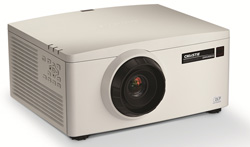 Christie is shipping its new G Series projectors, announced last month. The series includes two one-chip DLP models using a six-segment color wheel and offering a center-mounted lens. The DHD550-G is a native 1080p projector offering 5,000 lumens of brightness, while the DWU550-G is a WUXGA (1920×1200) projector with 5,100 lumens of brightness.
Both have a plethora of lens options that include 0.95-2.89 throw ratios, are designed for 24/7/365 operation and include an Eco-mode where they pull less than .5-watts when in standby. Inputs include HDMI, VGA, DVI, component and are network content enabled. Both are also compatible with ChristieNET.
Here are all the specs [PDF]: info.christiedigital.com/ct/378/708919/239799317/525e172403f2ac35b4c4c9dde895f9eb
Leave a Comment
Christie is shipping its new G Series projectors, announced last month. The series includes two one-chip DLP models using a six-segment color wheel and offering a center-mounted lens. The DHD550-G is a native 1080p projector offering 5,000 lumens of brightness, while the DWU550-G is a WUXGA (1920×1200) projector with 5,100 lumens of brightness.
Both have a plethora of lens options that include 0.95-2.89 throw ratios, are designed for 24/7/365 operation and include an Eco-mode where they pull less than .5-watts when in standby. Inputs include HDMI, VGA, DVI, component and are network content enabled. Both are also compatible with ChristieNET.
Here are all the specs [PDF]: info.christiedigital.com/ct/378/708919/239799317/525e172403f2ac35b4c4c9dde895f9eb
Leave a Comment
![]()
Click here for more information
![]()
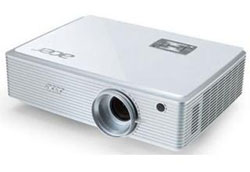 Acer is introducing the K750 is the world’s first 1080p projector using hybrid laser-LED light technology. Similiar to the technology Casio uses in its GreenSlim line of projectors, the K750 projector uses both LED and laser light sources that are free of hazardous substances like mercury or halogen gases, yet, according to the company, also improve color brightness when compared to high-pressure mercury lamps (white is whiter). This technology also increases the light-source lifetime to 20,000 hours in Extreme ECO mode and enables, says Acer, as much as 90 percent power savings (helping to reduce total cost of ownership and probably making the K750 one of the most environmental friendly projectors).
With a brightness of up to 1,500 lumens and a contrast ratio up to 100,000:1, this hybrid light-source technology enables flexible color settings and a wider color gamut to deliver color saturation up to 85 percent NTSC and offers color fidelity through a system of three independent color lighting sources.
This projector is so new it’s not on Acer’s website yet. But, when it is, it will be here: http://us.acer.com/ac/en/US/content/group/projectors
Leave a Comment
Acer is introducing the K750 is the world’s first 1080p projector using hybrid laser-LED light technology. Similiar to the technology Casio uses in its GreenSlim line of projectors, the K750 projector uses both LED and laser light sources that are free of hazardous substances like mercury or halogen gases, yet, according to the company, also improve color brightness when compared to high-pressure mercury lamps (white is whiter). This technology also increases the light-source lifetime to 20,000 hours in Extreme ECO mode and enables, says Acer, as much as 90 percent power savings (helping to reduce total cost of ownership and probably making the K750 one of the most environmental friendly projectors).
With a brightness of up to 1,500 lumens and a contrast ratio up to 100,000:1, this hybrid light-source technology enables flexible color settings and a wider color gamut to deliver color saturation up to 85 percent NTSC and offers color fidelity through a system of three independent color lighting sources.
This projector is so new it’s not on Acer’s website yet. But, when it is, it will be here: http://us.acer.com/ac/en/US/content/group/projectors
Leave a Comment
![]()
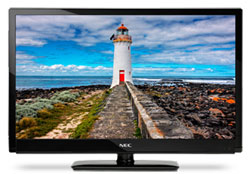 NEC Display debuted a third generation of its commercial-grade E Series monitors this month in the form of new 32-inch (E323), 42-inch (E423), 46-inch (E463) and 55-inch (E553) models. The entire E Series displays is targeted at affordable display options for educational, commercial AV, retail stores, quick-service restaurants, healthcare waiting rooms and fitness centers.
Using edge-lit LED backlighting, the E Series is thin (less than 1 inch) and consumes up to 56 percent less power (than CFL-lit), resulting in a lower total cost of ownership (TCO). The displays also offer a three-year warranty.
Inputs include three HDMI inputs and VGA, in addition to having an integrated ATSC (HDTV) off-air tuner. Control is via RS-232 and, for digital signage applications, the displays include a USB media player capable of automatically playing .jpg images. Contrast ratio is spec’d at 4,000:1 contrast ratio and all five models will ship next month.
The E323, E423, E463 and E553 are priced at $419, $649, $829 and $1279, respectively. Here are all the specs: http://www.necdisplay.com/category/large-screen-displays
Leave a Comment
NEC Display debuted a third generation of its commercial-grade E Series monitors this month in the form of new 32-inch (E323), 42-inch (E423), 46-inch (E463) and 55-inch (E553) models. The entire E Series displays is targeted at affordable display options for educational, commercial AV, retail stores, quick-service restaurants, healthcare waiting rooms and fitness centers.
Using edge-lit LED backlighting, the E Series is thin (less than 1 inch) and consumes up to 56 percent less power (than CFL-lit), resulting in a lower total cost of ownership (TCO). The displays also offer a three-year warranty.
Inputs include three HDMI inputs and VGA, in addition to having an integrated ATSC (HDTV) off-air tuner. Control is via RS-232 and, for digital signage applications, the displays include a USB media player capable of automatically playing .jpg images. Contrast ratio is spec’d at 4,000:1 contrast ratio and all five models will ship next month.
The E323, E423, E463 and E553 are priced at $419, $649, $829 and $1279, respectively. Here are all the specs: http://www.necdisplay.com/category/large-screen-displays
Leave a Comment
![]()
 InfoComm International announced a new executive director today, David Labuskes, CTS. He is currently vice president of RTKL, a division of ARCADIS, one of the world’s leading architectural and engineering firms and founder of the company’s Technology Design Practice. Labuskes’ responsibilities at the company are full operational, financial and marketing strategy for the delivery of design services around the world. He’s responsible for key account business development, client relationship management, P&L and product development. He also has over 20 years of IT and software development experience.
Current Executive Director and CEO Randal A. Lemke said, “I’ve had the pleasure of knowing and working with Dave for more than 10 years. I was delighted when I heard the search committee chose him.”
rAVe founder Gary Kayye said, “David is an AV insider, exactly what we needed at InfoComm. His technological expertise and leadership at RTKL is legendary and he’ll be a great leader of InfoComm and visionary for our industry.”
The InfoComm search committee for the new executive director and CEO was made up of Johanne Belanger, Lee Dodson, Matt Emerson, CTS, Jim Ford, PE, Greg Jeffreys, Mark Valenti, CTS and Tony Warner, CTS-D, who chaired the committee. In March, InfoComm retained Korn/Ferry International to assist in conducting the search.
Current InfoComm Executive Director and CEO Randy Lemke, Ph.D. announced this past January that he planned to retire at the end of the year. Lemke joined InfoComm in 1996 as vice president of education. In 1997, he pioneered InfoComm Academy Online, an Internet-based training system for the AV industry, which currently has 3,000 students enrolled daily. He became executive director and CEO of InfoComm in 2000.
Lemke holds board positions, and has been the chairman of Integrated Systems Events, LLC, a joint venture European trade show company, and InfoComm Asia PTE, Ltd., a joint venture company in Singapore operating InfoComm’s Asian tradeshows. He is the founding and current chairman of the STEP Foundation, a jointly supported foundation composed with other industry associations to bring sustainability to the process of planning, designing, integrating and operating technology systems and reduce long-term environmental impact from technology deployment. He has also served as chief executive of ICIF, InfoComm’s charitable foundation.
In January, Lemke said, “It has been an honor to serve the needs of such an exciting and innovative industry these past years, and it’s with mixed feelings that I leave the wonderful team of professionals and close friends I have made here at InfoComm.”
Leave a Comment
InfoComm International announced a new executive director today, David Labuskes, CTS. He is currently vice president of RTKL, a division of ARCADIS, one of the world’s leading architectural and engineering firms and founder of the company’s Technology Design Practice. Labuskes’ responsibilities at the company are full operational, financial and marketing strategy for the delivery of design services around the world. He’s responsible for key account business development, client relationship management, P&L and product development. He also has over 20 years of IT and software development experience.
Current Executive Director and CEO Randal A. Lemke said, “I’ve had the pleasure of knowing and working with Dave for more than 10 years. I was delighted when I heard the search committee chose him.”
rAVe founder Gary Kayye said, “David is an AV insider, exactly what we needed at InfoComm. His technological expertise and leadership at RTKL is legendary and he’ll be a great leader of InfoComm and visionary for our industry.”
The InfoComm search committee for the new executive director and CEO was made up of Johanne Belanger, Lee Dodson, Matt Emerson, CTS, Jim Ford, PE, Greg Jeffreys, Mark Valenti, CTS and Tony Warner, CTS-D, who chaired the committee. In March, InfoComm retained Korn/Ferry International to assist in conducting the search.
Current InfoComm Executive Director and CEO Randy Lemke, Ph.D. announced this past January that he planned to retire at the end of the year. Lemke joined InfoComm in 1996 as vice president of education. In 1997, he pioneered InfoComm Academy Online, an Internet-based training system for the AV industry, which currently has 3,000 students enrolled daily. He became executive director and CEO of InfoComm in 2000.
Lemke holds board positions, and has been the chairman of Integrated Systems Events, LLC, a joint venture European trade show company, and InfoComm Asia PTE, Ltd., a joint venture company in Singapore operating InfoComm’s Asian tradeshows. He is the founding and current chairman of the STEP Foundation, a jointly supported foundation composed with other industry associations to bring sustainability to the process of planning, designing, integrating and operating technology systems and reduce long-term environmental impact from technology deployment. He has also served as chief executive of ICIF, InfoComm’s charitable foundation.
In January, Lemke said, “It has been an honor to serve the needs of such an exciting and innovative industry these past years, and it’s with mixed feelings that I leave the wonderful team of professionals and close friends I have made here at InfoComm.”
Leave a Comment
![]()
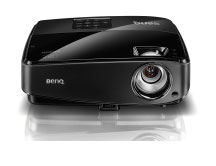 BenQ is shipping what it’s calling “next generation” projectors with the MS517, MX518, and MW519 “SmartEco” projectors, which are aimed at small- to medium-sized spaces. All three are specified at 2,800 ANSI lumens and a contrast ratio of 13000:1, claiming a lamp life up to 6,500 hours. The difference is in resolution: SVGA (MS517), XGA (MX518) and WXGA (MW519). All include HDMI 1.4 inputs, VGA ports as well as network and RS232 control.
So, what is defined as “EcoSmart”? When you put the projectors in “SmartEco” mode, they automatically adjust the lamp power to maximize power savings by delivering the best contrast and brightness performance using only as much light as needed, based on ambient light. And, if you disconnect a source (or switch to a blank input) the projector automatically lowers brightness another 30 percent after three minutes. There’s also an “Eco Blank” mode where users can blank screens when not in use to lower light source power consumption to only 30 percent, useful for when the audience’s attention needs to focus on material other than the projected image.
The BenQ MS517, MX518, and MW519 retail at $449, $549 and $649, respectively. All the specs are here: http://info.benq.us/benqs-newest-small-to-medium-room-size-projectors
Leave a Comment
BenQ is shipping what it’s calling “next generation” projectors with the MS517, MX518, and MW519 “SmartEco” projectors, which are aimed at small- to medium-sized spaces. All three are specified at 2,800 ANSI lumens and a contrast ratio of 13000:1, claiming a lamp life up to 6,500 hours. The difference is in resolution: SVGA (MS517), XGA (MX518) and WXGA (MW519). All include HDMI 1.4 inputs, VGA ports as well as network and RS232 control.
So, what is defined as “EcoSmart”? When you put the projectors in “SmartEco” mode, they automatically adjust the lamp power to maximize power savings by delivering the best contrast and brightness performance using only as much light as needed, based on ambient light. And, if you disconnect a source (or switch to a blank input) the projector automatically lowers brightness another 30 percent after three minutes. There’s also an “Eco Blank” mode where users can blank screens when not in use to lower light source power consumption to only 30 percent, useful for when the audience’s attention needs to focus on material other than the projected image.
The BenQ MS517, MX518, and MW519 retail at $449, $549 and $649, respectively. All the specs are here: http://info.benq.us/benqs-newest-small-to-medium-room-size-projectors
Leave a Comment
![]()
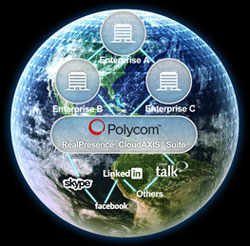 Polycom made several major announcements this week, one of which is new Polycom RealPresence CloudAXIS Suite, a cloud-based software suite that allows Polycom customers to add anyone on Skype, Facebook, Google Talk and other business video applications to their video conferences from a browser. RealPresence CloudAXIS is software suite that runs on the Polycom RealPresence Platform in either private enterprise clouds or public clouds, and securely extends enterprise-grade video and content collaboration outside the firewall to other businesses (B2B) and consumers (B2C) via a browser.
The RealPresence CloudAXIS Suite is ideal for Polycom dealers to expand from offering Video-as-a-Service (VaaS) to Video Collaboration-as-a-Service (VCaaS) — adding applications such as recording and streaming, web conferencing, and collaboration tools (e.g., digital whiteboards). RealPresence CloudAXIS also offers additional value for large enterprises with the RealPresence Platform, enabling customers to create private enterprise clouds to extend video collaboration to other businesses and consumers for B2B and B2C connectivity.
Polycom says that RealPresence CloudAXIS Suite eliminates the security risks and administrative headaches posed by third-party video clients and solutions introduced onto corporate networks by employees who communicate over unsecure connections. RealPresence CloudAXIS also enables enterprises to leverage their investment in existing standards-based Polycom video collaboration systems — including room/group, desktop or mobile video solutions — and the RealPresence Platform.
RealPresence CloudAXIS Suite fast-tracks dealers that want to get to market quickly with new subscription-based revenue streams via both B2C and B2B VCaaS offerings. VCaaS enables dealers to offer value-added applications on top of cloud-delivered video conferencing, including recording and streaming and web conferencing, plus collaboration tools such as digital whiteboards and collaboration apps for vertical markets like healthcare or education. This offers opportunities to dealers to drive more monthly/annual service subscription sales, which are a key profit center for AV dealers.
Polycom made several major announcements this week, one of which is new Polycom RealPresence CloudAXIS Suite, a cloud-based software suite that allows Polycom customers to add anyone on Skype, Facebook, Google Talk and other business video applications to their video conferences from a browser. RealPresence CloudAXIS is software suite that runs on the Polycom RealPresence Platform in either private enterprise clouds or public clouds, and securely extends enterprise-grade video and content collaboration outside the firewall to other businesses (B2B) and consumers (B2C) via a browser.
The RealPresence CloudAXIS Suite is ideal for Polycom dealers to expand from offering Video-as-a-Service (VaaS) to Video Collaboration-as-a-Service (VCaaS) — adding applications such as recording and streaming, web conferencing, and collaboration tools (e.g., digital whiteboards). RealPresence CloudAXIS also offers additional value for large enterprises with the RealPresence Platform, enabling customers to create private enterprise clouds to extend video collaboration to other businesses and consumers for B2B and B2C connectivity.
Polycom says that RealPresence CloudAXIS Suite eliminates the security risks and administrative headaches posed by third-party video clients and solutions introduced onto corporate networks by employees who communicate over unsecure connections. RealPresence CloudAXIS also enables enterprises to leverage their investment in existing standards-based Polycom video collaboration systems — including room/group, desktop or mobile video solutions — and the RealPresence Platform.
RealPresence CloudAXIS Suite fast-tracks dealers that want to get to market quickly with new subscription-based revenue streams via both B2C and B2B VCaaS offerings. VCaaS enables dealers to offer value-added applications on top of cloud-delivered video conferencing, including recording and streaming and web conferencing, plus collaboration tools such as digital whiteboards and collaboration apps for vertical markets like healthcare or education. This offers opportunities to dealers to drive more monthly/annual service subscription sales, which are a key profit center for AV dealers.
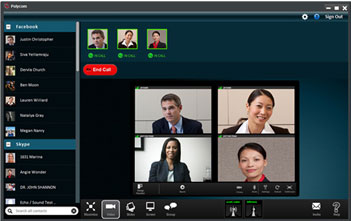 Dealers can even co-brand the experience, including the user interface, and by leveraging Polycom’s recently announced suite of open APIs for the RealPresence Platform, they can integrate the RealPresence CloudAXIS suite with operations and billing support systems (OSS/BSS), as well as create unique value-added enterprise or consumer applications.
The RealPresence CloudAXIS Suite consists of a global directory presence engine, web client (supports HTML5-compatible browsers) and what Polycom is calling a “flexible resource broker” that dynamically allocates and brokers crucial variables such as bandwidth, databases, sessions and media to ensure an optimal user experience.
Polycom plans to make trials of the RealPresence CloudAXIS Suite available to service providers in Q1 of 2013. For more information, go to http://www.polycom.com
Leave a Comment
Dealers can even co-brand the experience, including the user interface, and by leveraging Polycom’s recently announced suite of open APIs for the RealPresence Platform, they can integrate the RealPresence CloudAXIS suite with operations and billing support systems (OSS/BSS), as well as create unique value-added enterprise or consumer applications.
The RealPresence CloudAXIS Suite consists of a global directory presence engine, web client (supports HTML5-compatible browsers) and what Polycom is calling a “flexible resource broker” that dynamically allocates and brokers crucial variables such as bandwidth, databases, sessions and media to ensure an optimal user experience.
Polycom plans to make trials of the RealPresence CloudAXIS Suite available to service providers in Q1 of 2013. For more information, go to http://www.polycom.com
Leave a Comment
![]()
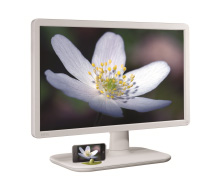 BenQ’s new VW30 Series of vertical alignment (VA) LED monitors are designed to match Apple computers. BenQ’s white, asymmetrical VW2230H and VW2430H monitors do have a pretty sleek, simple look and are 21.5-inch and 24-inch displays, respectively. One interesting feature is a so-called Reading Mod where BenQ says the monitors will adjust their settings automatically to simulate the warmth of reading paper.
The LED-backlit displays both offer an HDMI 1.4 input, a VGA port and DVI-D connections. BenQ says the displays need 50 percent less power than the company’s previous generation of CFL monitors. The Eco Mode regulates backlight brightness, based on ambient light, using 37 percent less power in normal low lighting and then goes down 44 percent at night or in darker environments. The displays are mercury-free, plus use BFR/PVC-free casing plastics and eco-friendly ink on its packaging.
The VW2230H and VW2430H are will ship in November and are $179 and $249, respectively. Here are all the specs: http://info.benq.us/new-mac-compatible-all-white-monitors-from-benq
Leave a Comment
BenQ’s new VW30 Series of vertical alignment (VA) LED monitors are designed to match Apple computers. BenQ’s white, asymmetrical VW2230H and VW2430H monitors do have a pretty sleek, simple look and are 21.5-inch and 24-inch displays, respectively. One interesting feature is a so-called Reading Mod where BenQ says the monitors will adjust their settings automatically to simulate the warmth of reading paper.
The LED-backlit displays both offer an HDMI 1.4 input, a VGA port and DVI-D connections. BenQ says the displays need 50 percent less power than the company’s previous generation of CFL monitors. The Eco Mode regulates backlight brightness, based on ambient light, using 37 percent less power in normal low lighting and then goes down 44 percent at night or in darker environments. The displays are mercury-free, plus use BFR/PVC-free casing plastics and eco-friendly ink on its packaging.
The VW2230H and VW2430H are will ship in November and are $179 and $249, respectively. Here are all the specs: http://info.benq.us/new-mac-compatible-all-white-monitors-from-benq
Leave a Comment
![]()
![]()




 Over the past six years I have been striving to find the right balance point between our industry’s response to the global climate change mess we are inheriting/propagating and the present-day needs of our industry to stay viable and add value to our customers amidst a technological sea change that is breathtaking, in and of itself. While “being green” speaks to my soul, “making green” speaks to my family, employees, mortgage company, banker, etc. Everyone once in a while the whole “being” thing and “making” thing come together. When it does, it can be jaw dropping.
Over the past six years I have been striving to find the right balance point between our industry’s response to the global climate change mess we are inheriting/propagating and the present-day needs of our industry to stay viable and add value to our customers amidst a technological sea change that is breathtaking, in and of itself. While “being green” speaks to my soul, “making green” speaks to my family, employees, mortgage company, banker, etc. Everyone once in a while the whole “being” thing and “making” thing come together. When it does, it can be jaw dropping.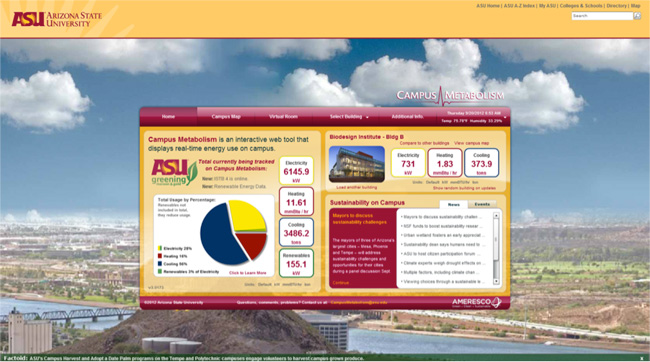 Then, as I got into the action plans, I saw the variety of approaches these institutions are employing to get to carbon neutrality. Each report has some version of a chart like the one below that shows their energy consumption if they follow a “business as usual” approach to the future verses a carbon-neutral approach.
Then, as I got into the action plans, I saw the variety of approaches these institutions are employing to get to carbon neutrality. Each report has some version of a chart like the one below that shows their energy consumption if they follow a “business as usual” approach to the future verses a carbon-neutral approach.
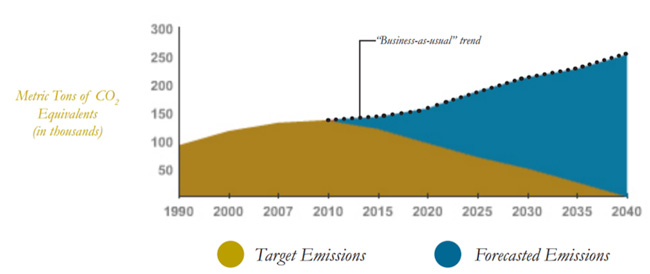 Some institutions have very aggressive schedules that get them to carbon neutrality within the decade. Others — and I really had to admire the optimism in this — show a carbon-neutral date of 2099. (You just gotta love academics. Not only did these institutions firmly believe they were still going to be around in 2099, they also imagined that 86 years from now they’d be really, really close to hitting their climate-action goal. I just had to smile at that.)
Most institutions employed a mix of strategies to meet their climate-action goal but their plans all end with a statement that basically says, “…and then we’ll buy a huge amount of carbon offsets to make up the rest the gap.” That brought me to Epiphany #1: Why would they want to buy one more pound of carbon offsets than necessary when our industry can probably help them squeeze more efficiency out of their buildings through STEP and smart building technologies? It just doesn’t make any sense to stop short of true energy efficiency based on a lack of understanding about what a smart building approach could do for them. Nearly all signatories pledge to make all new construction LEED Silver or higher. What if we could convince them to go LEED Silver and STEP Silver or higher on all their future buildings? In the words of the immortal Wayne Campbell, “Shwing!”
Some institutions have very aggressive schedules that get them to carbon neutrality within the decade. Others — and I really had to admire the optimism in this — show a carbon-neutral date of 2099. (You just gotta love academics. Not only did these institutions firmly believe they were still going to be around in 2099, they also imagined that 86 years from now they’d be really, really close to hitting their climate-action goal. I just had to smile at that.)
Most institutions employed a mix of strategies to meet their climate-action goal but their plans all end with a statement that basically says, “…and then we’ll buy a huge amount of carbon offsets to make up the rest the gap.” That brought me to Epiphany #1: Why would they want to buy one more pound of carbon offsets than necessary when our industry can probably help them squeeze more efficiency out of their buildings through STEP and smart building technologies? It just doesn’t make any sense to stop short of true energy efficiency based on a lack of understanding about what a smart building approach could do for them. Nearly all signatories pledge to make all new construction LEED Silver or higher. What if we could convince them to go LEED Silver and STEP Silver or higher on all their future buildings? In the words of the immortal Wayne Campbell, “Shwing!”
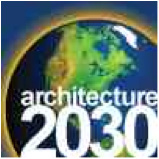 Then I started angling toward Epiphany #2: I got curious/selfish to see how many Waveguide clients were among the 660 signatories. I was pleased to see that we had 40 current clients on the list. Forty! Furthermore, I counted about 20 more signatory institutions we had courted but hadn’t yet landed as clients. Then it hit me: We’ve never talked to any of these clients or potential clients about how we can help them with their carbon neutrality plans. And among the many big ironies here is the additional fact that most of the architecture firms we work with in our higher education practice have signed the
Then I started angling toward Epiphany #2: I got curious/selfish to see how many Waveguide clients were among the 660 signatories. I was pleased to see that we had 40 current clients on the list. Forty! Furthermore, I counted about 20 more signatory institutions we had courted but hadn’t yet landed as clients. Then it hit me: We’ve never talked to any of these clients or potential clients about how we can help them with their carbon neutrality plans. And among the many big ironies here is the additional fact that most of the architecture firms we work with in our higher education practice have signed the  So, I figure if I start this week and call one ACUPCC university and one 2030 Challenge architect a week, it’ll take me more than a year to get to all of them.
Ladies and gentlemen, start your engines.
Scott Walker, CTS-D, LEED® AP, is president and CEO of Waveguide Consulting, a leading AV, IT and acoustical consulting firm. He is also a past president of InfoComm International. Scott is recognized as being one of the primary forces behind the founding of the Sustainable Technology Environments Program (STEP) rating system and currently is a member of the STEP Foundation board, which is responsible for managing the STEP program. Scott can be reached at
So, I figure if I start this week and call one ACUPCC university and one 2030 Challenge architect a week, it’ll take me more than a year to get to all of them.
Ladies and gentlemen, start your engines.
Scott Walker, CTS-D, LEED® AP, is president and CEO of Waveguide Consulting, a leading AV, IT and acoustical consulting firm. He is also a past president of InfoComm International. Scott is recognized as being one of the primary forces behind the founding of the Sustainable Technology Environments Program (STEP) rating system and currently is a member of the STEP Foundation board, which is responsible for managing the STEP program. Scott can be reached at 